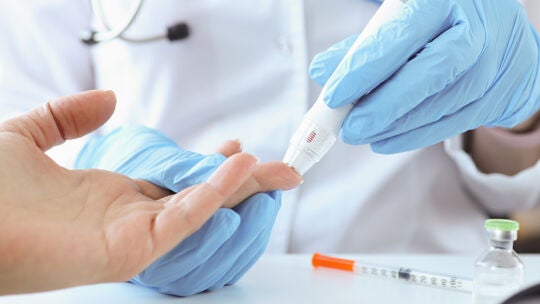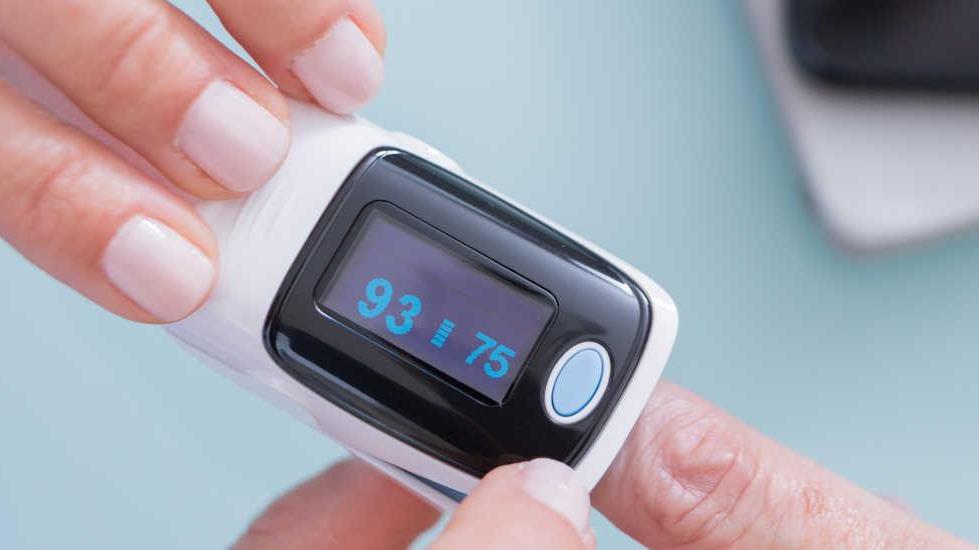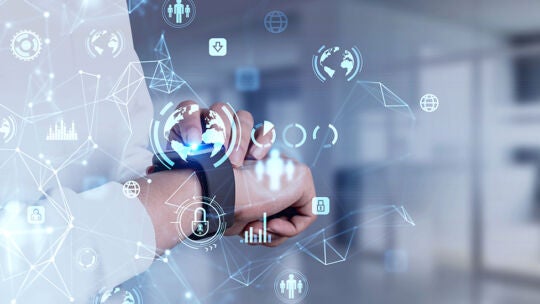
What do you see when you look at the technology used in healthcare?
We see advancements in the Internet of Things (IoT) and custom sensors improving patient safety, information accuracy, and critical quality control.

Advances in silicon technology have generated smaller sensors that are easier to integrate and require less energy. Lower costs have even made sensors in disposable applications, like single-use cartridges and product packaging, a possibility.
We partner with customers to integrate sensors into applications like medical devices, product packaging, and environmental monitors — just to name a few. Then we help them transfer that data to the cloud.
Here’s how we use our expertise in sensors and Flexino, our custom sensor integration development kit, to help build these applications.
Improving patient safety
As drug delivery devices become increasingly automated, devices require reliable data to make sure they’re operating as intended. Accelerometers can measure a device’s vertical orientation before an injection. Magnetic sensors can monitor the progress of a plunger of a syringe, adjusting the delivery speed and reducing pain. Capacitive sensors make sure that the needle is properly aligned with the skin at the injection point. And when capacitive sensors are used for touch-sensitive areas, we no longer need physical buttons — making the device easier to sterilize and preventing the collection of bacteria.
Making it easier to breathe
Sensors offer an easy and cost-effective way to monitor air quality. The ability to detect extremely small variations in gases or particulates is useful for hospitals, consumers, businesses, and more.
For example, we can integrate highly sensitive, power-efficient sensors into devices to detect odorless gases such as carbon monoxide. Hospitals can protect patients with COPD (Chronic Obstructive Pulmonary Disease) from further lung irritation by scanning their room for harmful particulates. With connected, instantly accessible data, healthcare providers can make changes based on results that previously would have taken much longer to compile.
Making smarter packaging and drug containers
Biologic products, vaccines, and pharmaceuticals have two common adversaries: temperature and time. Sensors in single-use parts in devices like personal injectors allow the device to check the drug’s temperature, expiration date, and concentration. It can also connect to the cloud to double-check the injection settings against what has been prescribed by the doctor and raise an alert or a suggestion to the patient.
Similarly, sensors embedded in packaging monitor these factors during storage and shipping. With smart sensors embedded in packaging, you can verify at a glance whether sensitive formulas have remained at the right temperature from start to finish. Plus, you can track a sensor-equipped package at all times, allowing real-time inventory or delivery reports.
Our smart color label indicates humidity and temperature changes, so you can count on the integrity of the product. The right sensors and packaging let you verify status instantly. No guessing.
Connecting devices to the cloud
Our experience in the system design of electronics, mechanics, and optical components has enabled more accurate, less costly, and much smaller IoT biomedical devices, where connectivity functions can be easily integrated. Gone are the days of driving to a doctor’s office just to have vitals recorded. Now patients can take and send their own vital stats accurately and from the comfort of home with a smart sensor device. Likewise, pharmaceutical and device companies can remotely track stats from patients in clinical trials for more efficiency, convenience, and accuracy — getting better data faster. All protected by the most secure encryption and authentication protocols.
Custom sensor development
We partner with our customers and use tools like Flexino to create the next generation of biomedical IoT applications and smart wearables. Our sensor integration kit can help customers in the concept phase quickly visualize and test their idea on a real product architecture, understanding opportunities and limitations in a real-world scenario.
Sensors represent just one of the many ways that we seek to help the healthcare industry improve patient outcomes.


